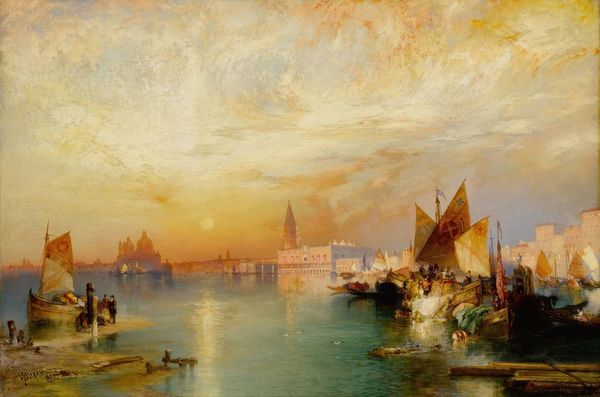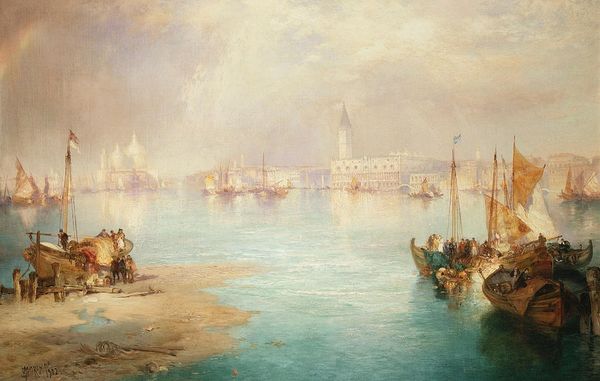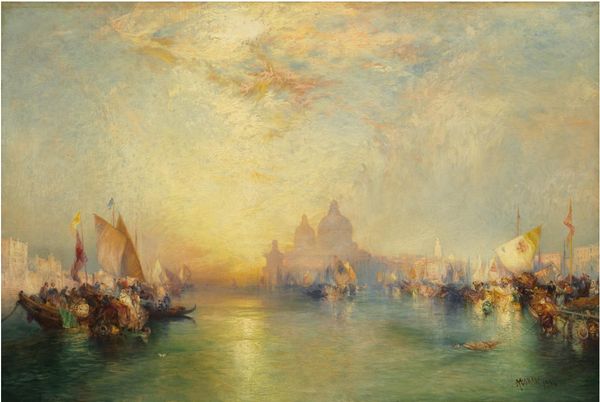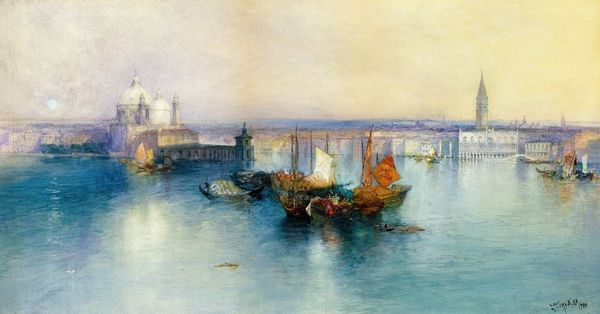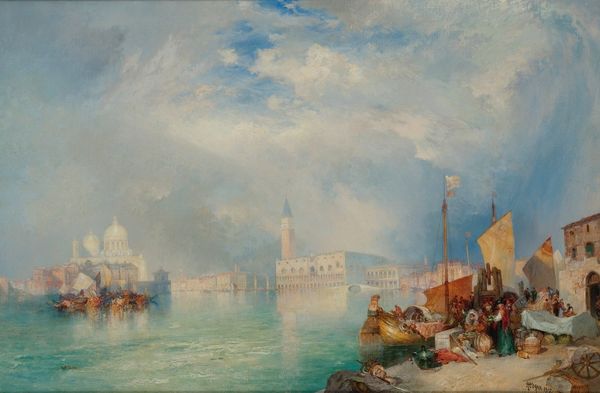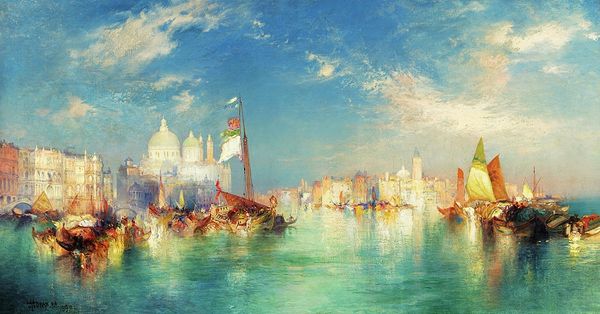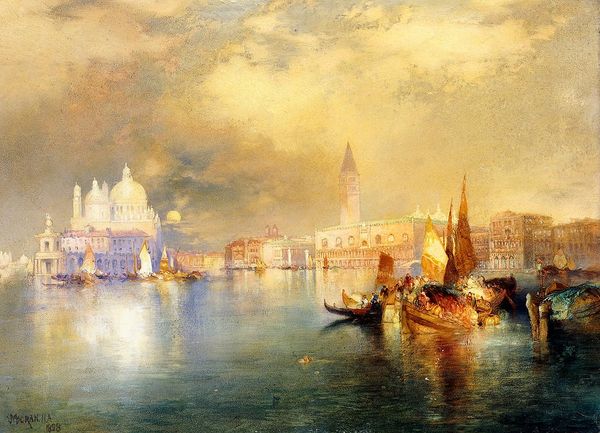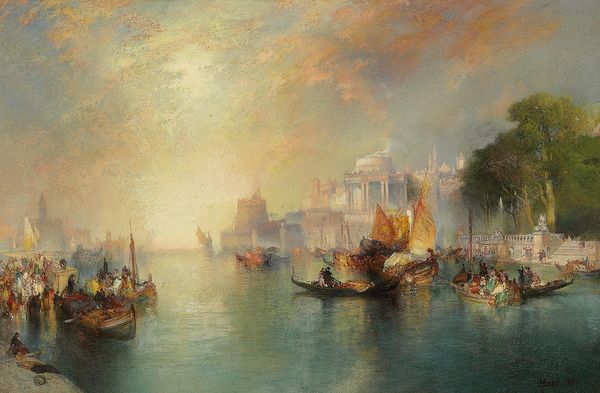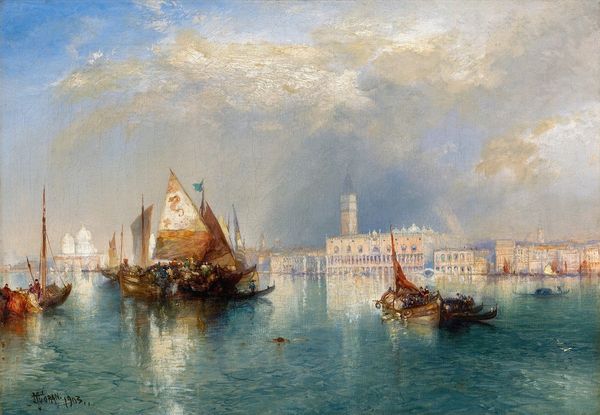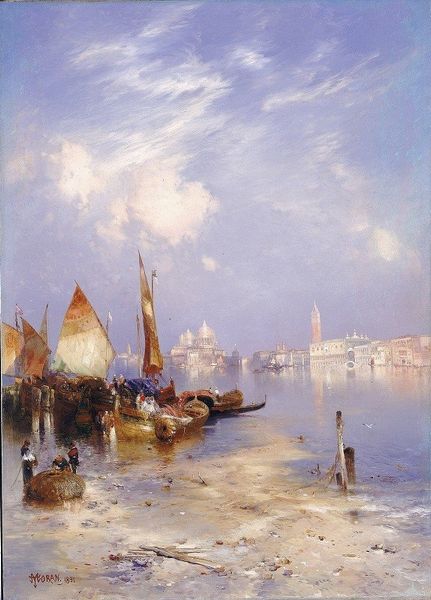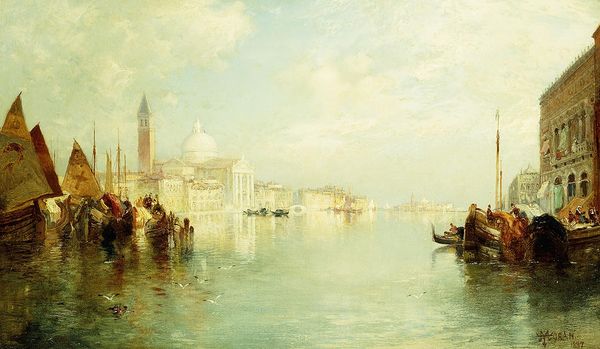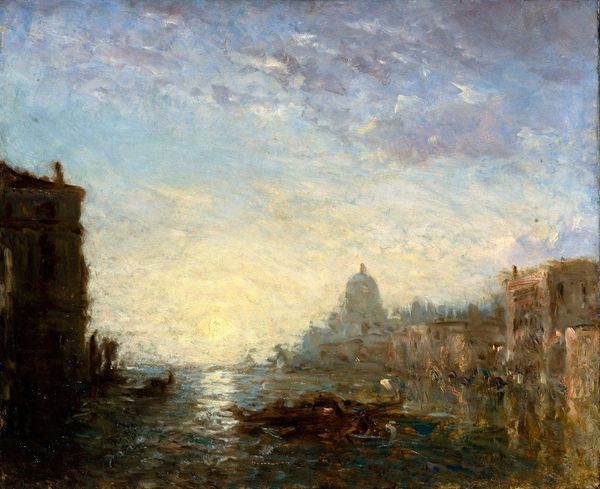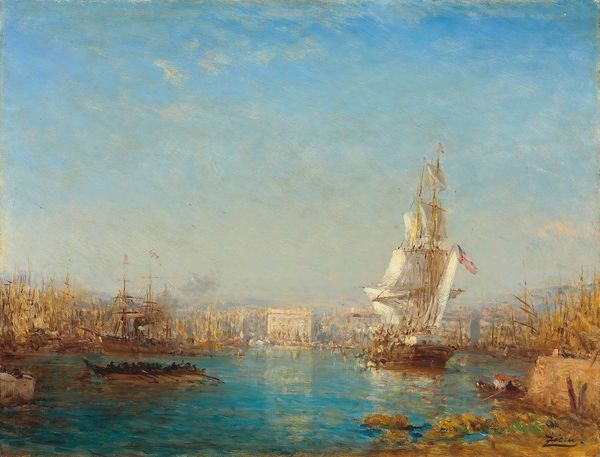
#
abstract painting
#
impressionist painting style
#
landscape
#
impressionist landscape
#
possibly oil pastel
#
oil painting
#
underpainting
#
painting painterly
#
watercolour bleed
#
watercolour illustration
#
watercolor
Copyright: Public Domain: Artvee
Editor: This is Thomas Moran's "Venetian Scene," painted in 1898. It’s an absolutely stunning view of the city from the water. It feels very serene, almost dreamlike with its hazy atmosphere. What do you see in this piece? Curator: Beyond the beauty, I see a reflection of Venice's complex social fabric in the late 19th century. The hazy, dreamlike quality you mention is not just aesthetic; it obscures, perhaps intentionally, the realities of labor and class. Venice was, and still is, a city built on trade, on the backs of its working class, many of whom lived in precarious conditions. Editor: I hadn’t considered that. How does that translate in the painting itself? Curator: Look at the positioning of the gondolas, clustered in the foreground. While they appear picturesque, they are also tools of labor and transport. Moran romanticizes them, yet their presence reminds us of the lives interwoven with the city's waterways. And consider the overall impressionist style. Who has access to leisurely ‘impressions’ and who doesn’t? Who controls how we think about Venice, who is being watched, and who has agency in a city steeped in complex histories of economic disparity? Editor: That's a powerful point. It shifts my perception completely. I was initially drawn to the idyllic scene, but now I see how it subtly obscures those social dynamics. Curator: Exactly. Moran was an American artist interpreting a European city. How might his perspective be informed by class and empire, by a romanticized, exterior view? The painting prompts us to consider whose Venice is being represented and who is left out of the frame. Editor: I see what you mean. So, it's not just about what's depicted, but also about what's intentionally—or unintentionally—left out. Curator: Precisely. Analyzing "Venetian Scene" through this lens reminds us to critically examine not just the art itself, but the power dynamics at play in its creation and reception. Editor: I’ll definitely look at landscapes differently now. Thanks for showing me another way to engage with art history.
Comments
No comments
Be the first to comment and join the conversation on the ultimate creative platform.
